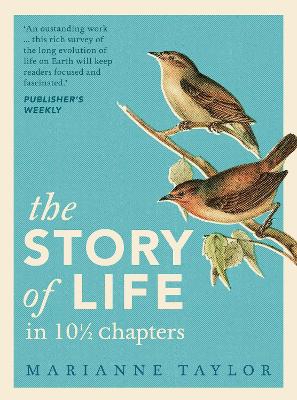An exploration of the key aspects of life on Earth – now and in the future – through the study of 10 and a half species.
'Entertaining and intellectually stimulating... The book highlights the wonderfully interconnected nature of our fragile planet. If you want big science at an accessible scale, this is for you' BBC Wildlife
If an alien visitor were to collect ten souvenir life forms to represent life on earth, which would they be? This is the thought-provoking premise of Marianne Taylor's The Story of Life in 10½ Chapters. Each life form explains a key aspect about life on Earth. From the sponge that seems to be a plant but is really an animal to the almost extinct soft-shelled turtle deemed extremely unique and therefore extremely precious, these examples reveal how life itself is arranged across time and space, and how humanity increasingly dominates that vision.
Taylor, a prolific science writer, considers the chemistry of a green plant and ponders the possibility of life beyond our world. She investigates the virus in an attempt to determine what a life form is; and wonders if the human – 'a distinct and very dominant species with an inevitably biased view of life' – could evolve in a new direction. She tells us that the giraffe was one species, but is now four; that the dusky seaside sparrow may be revived through 're-evolution', or cloning; explains the significance of Darwin's finch to evolution; and much more. The 'half' species is artificial intelligence. Itself an experiment to understand and model life, AI is central to our future – although from the alien visitor's standpoint, unlikely to inherit the earth in the long run.
- ISBN10 1800249187
- ISBN13 9781800249189
- Publish Date 8 July 2021
- Publish Status Active
- Publish Country GB
- Imprint Apollo
- Format Hardcover
- Pages 256
- Language English
